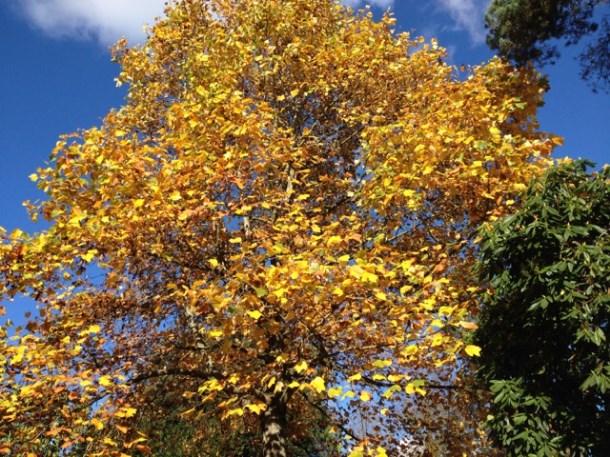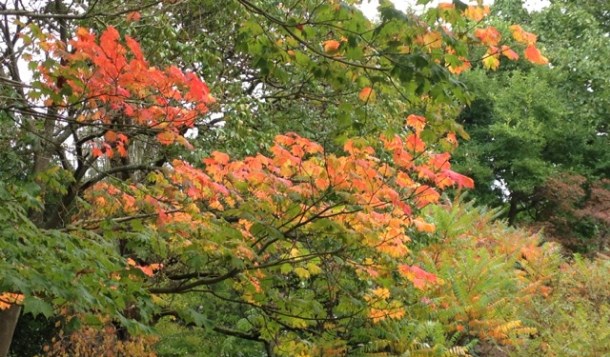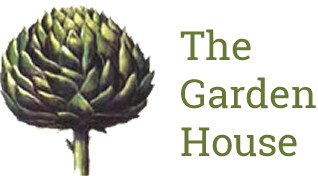In a Nutshell: the How and Why of Autumn Colour Change
Posted:9 November 2014
As we head towards winter, we’ve been thinking about this year’s exceptionally mild autumn days and vibrant autumn colour. Certainly in the south-east we’ve enjoyed sunshine and warmth all through September and October (the warmest Halloween on record) allowing us a longer time to wonder at the glowing yellow, orange, red purple and brown foliage in local arboretums and gardens.
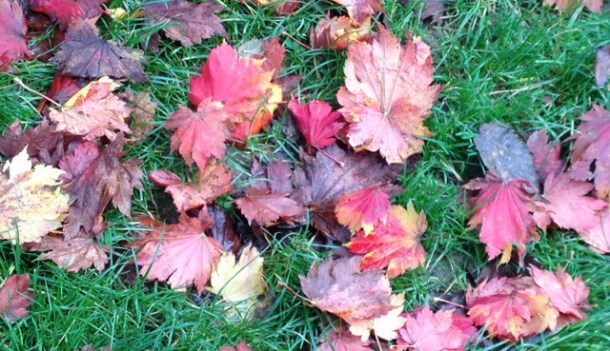
Ever wondered how and why this change happens?
Many think that cool weather or frost cause the leaves to change colour. While temperature may dictate the colour and its intensity, it is only one of many environmental factors that play a part in painting deciduous woodlands in a mosaic of glorious colours.
At the heart of the phenomenon is photosynthesis, which is the basis for sustaining the life processes of all plants. Photosynthesis converts light energy, normally from the sun, into chemical energy that can be later released to fuel the organisms activities, and which in turn creates something called chlorophyll. Chlorophyll is the molecule that absorbs sunlight and uses its energy to synthesise carbohydrates from CO2 and water.
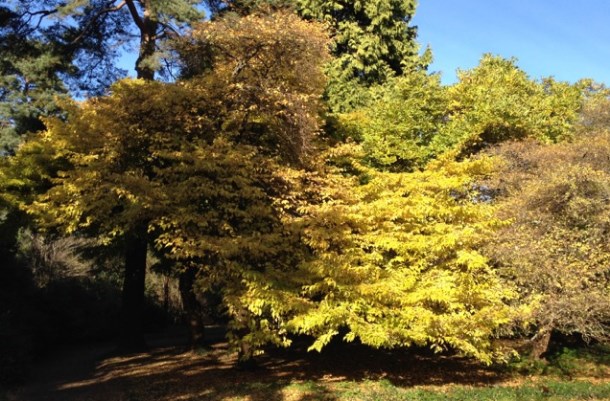
During the growing season, chlorophyll is replaced constantly in the leaves. As summer ends the days get shorter and drier and the trees “know” to begin getting ready for winter, they begin to shut down their food-making factories and just before the leaves fall the chlorophyll starts to break down and in a relatively short time period, disappears completely and other underlying organic pigments (mainly carotenoids and anthocyanins) are revealed. Small amounts of these colors have been in the leaves all along, we just cant see them in the summer because they are covered up by the green chlorophyll.
Carotenoids are mainly yellow or orange pigments, such as found in carrots, and anthocyanins are red or purple pigments produced as by-products of photosynthesis. In some plants, such as copper beech, anthocyanins dominate, producing purplish-coloured leaves. In some trees, like maples, glucose is trapped in the leaves after photosynthesis stops sunlight and the cool nights of autumn cause the leaves turn this glucose into a red color.
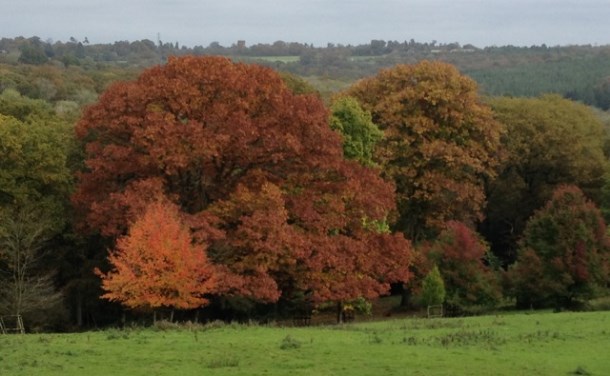
Like chlorophyll, these other pigments eventually break down in light or when they are frozen. The only pigments that remain are tannins, which are brown. The brown color of trees like oaks is made from wastes left in the leaves.
It is the combination of all these things that make the beautiful mosaic of foliage colours we enjoy each year.
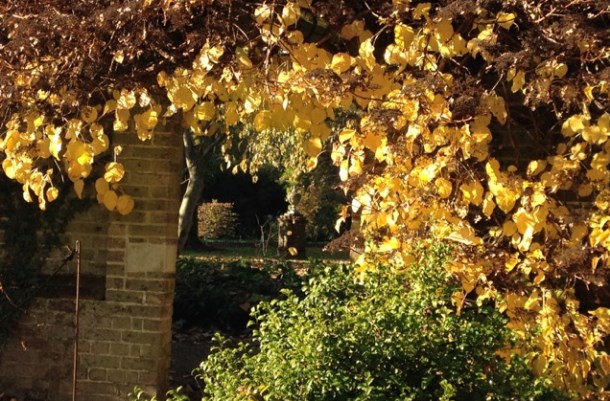
Plants to consider to bring autumn colour into your garden (list courtesy of rhs.org.uk):
Trees for smaller gardens:
- Amelanchier lamarckii AGM – orange and red
- Cornus kousa chinensis AGM – orange and red
- Prunus, such as sargentiiAGM – bright orange and red
- Sorbus ‘Joseph Rock’ – orange, red and purple
Large trees:
- Cercidiphyllum japonicum AGM – yellow, orange and pink; also curious smell of burnt sugar as leaves break down in autumn
- Nyssa sylvaticaAGM – brilliant red and yellow
- Parrotia persica AGM – yellow, red and purple
- Liquidambar styraciflua – brilliant reds and purples, long-lasting autumn colour
Shrubs with exciting autumn tints:
- Euonymus alatus AGM – rosy-crimson
- Acer palmatum ‘Osakazuki’ AGM – brilliant orange-scarlet
- Hamamelis – butter-yellow
- Cotinus coggygria AGM – yellow, orange and red
- Berberis thunbergii AGM – red and orange
- Enkianthus campanulatus AGM – bright red, orange and yellow
Vigorous climbers:
- Parthenocissus tricuspidataAGM – brilliant crimson and purple
- Vitis coignetiae AGM – scarlet and crimson
